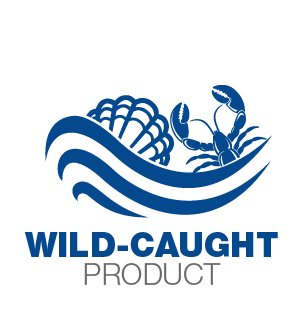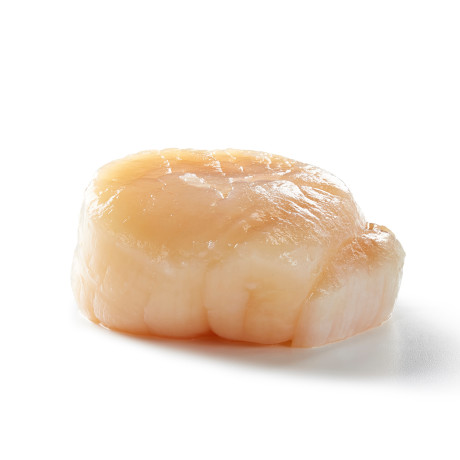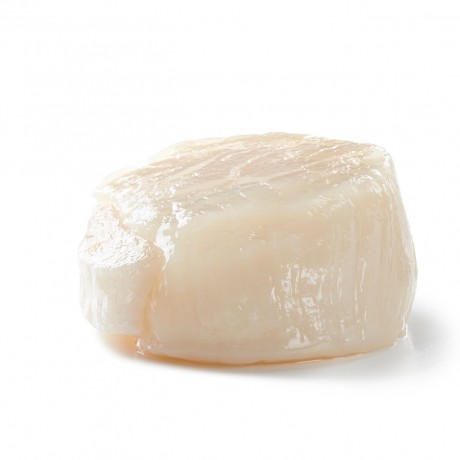

Wild or from a fish farm?
Both the PremiumShellfish® lobsters and scallops are wild products, fished in the cold Sea of east Canada (fishing zone FAO 21) and the southeast of Argentina (fishing zone FAO 41), close to the Antarctica area.

Is the PremiumShellfish lobster cooked or raw?
Our lobster is presented peeled raw and deep frozen. This is possible thanks to the high pressure peeling system (HHP or High Pressure Processing) applied to the lobsters. Once this process has been applied, we can extract the meat, pack it and deep freeze it in half an hour. This is how we guarantee a unique texture and flavour of the bets premium quality hard-shell Canadian lobsters, 100% natural, free of additives and preservatives, at the same time as we eliminate the waste and facilitate the use of the product. l We also provide a real cost breakdown and the piece of mind of not having last minute surprises.

What is the difference between a hard-shell lobster and a soft-shell lobster? (Hard Shell Lobster vs Soft Shell Lobster)
The difference lies in that we capture our PremiumShellfish hard-shell lobsters when they are about to shed the shell, that is why they are filler inside and their meat is smoother and of a higher quality. Unlike other brands, at PremiumShellfish we only capture hard-shell lobsters when they are at their best, which is between December and January and May and June. Which is the difference with soft-shell lobsters? They are lobsters fished off-season and when they have already shed their shell, and these animals dedicate a large part of their resources to harden their shell; then their meat contains a high amount of water and does not have the right density. lThat is why it has high amount of loss when cooking. The yield difference between a Premiumshellfish hard-shell lobster and a soft-shell lobster can reach up to 50%. Soft-shell lobsters are fished mainly in the U.S., although there are also products of similar quality in Canada and therefore the origin of the product does not assure its quality either. Hard-shell lobsters are more difficult to capture as this takes place when the water is colder and the lobsters are far from the coast, so they are more scattered and it is much more complicated to fish them. When the lobster sheds its shell and turns into a soft-shell lobster, it is when it approaches the coast where the water is warmer and their concentration per km2 increases exponentially and it is much easier to catch them; this also reduces their yield, decreases their quality and makes their price be much lower.

NON-injected product
At PremiumShellfish® we do not inject or add any type of additive to our products, because as we process on board (in the case of the scallop) or separate the shell and deep freeze quickly (in the case of the lobster) we do not need to conceal or make up the freshness of our products. That's why we can refer to a 100% natural product, free from additives and without any type of preservative.
A very plain way of checking if a scallop has been injected or not, is the following: In the large sizes there should be a large amount of orange or yellowish colour scallops, if this is not so- they are probably smaller scallops that have been fattened until reaching a larger size, as the fatting process increases both the size and the weight of a scallop by about 25 or 30%. This process does affect the texture and flavour of the product and makes for their weight and size not to be as so.
Here is a video for on how a scallop is processed and injected on-shore:
https://www.youtube.com/watch?v=tRbL-A4XkzI

Onboard freezing? What is the difference with freezing on-shore?
We capture,clean and deep-freeze our Premiumshellfish on board pre-rigor mortis, we are the only High Seas fishery in the world that uses this processing system. Only with this such immediate processing method do we ensure not having to add any additives or preservatives to the product to be able to reach land and process it. That's why we offer 100% natural and healthy. This onboard freezing system enables us to offer fresher scallops than those sold on the market.
On the other hand, when frozen on-shore (mostly used system) the scallop is treated and injected with additives, as it can not be a fresh product due to the long fishing sessions that last for approximately 6 days. l When fresh, both seafood and fish hardly smell of anything, only of a subtle sea aroma. We invite you to smell our products both frozen and immediately after being defrosted, and you will feel a sweet and fresh aroma. One of our mottos is:
Fresher that if it were alive! And we can assure you that this is true.

What does IQF freezing mean?
We deep-freeze our PremiumShellfish scallops onboard with the IQF system (Individual Quick Freezing), that is, individually and not in block. This system is very practical, because by having the scallops frozen one by one you can use them for your convenience and defrost them by pieces or portions according to your needs.

What is glazing and what does being compensated mean?
Glazing is a protection layer applied around the product that protects it from deteriorating due to the conservation temperature and prevents it from burning with the low temperatures in the freezers. The glazing is an amount of water that we lose when we defrost the product, that's why when we refer to a compensated glazing it means that our PremiumShellfish scallops have the Net Drained Weigh indicated on the packet. That way, the PremiumShellfish always weigh more than what is indicated on the packet and we compensate that loss of water that take place when defrosting with more gross weight.
On our case the glazing is of approximately 5%, that we always add to the weight of the product. Very few companies use compensated glazing, that is why we recommend that you get information on the glazing and on whether it is compensated or not before buying a product. l As a general rule in the fish and seafood works companies work with non-compensated glazing which range from 20 to 50% and this directly affects the purchase price and subsequently the yield of the product. Buying sea water at €20, €30 or €40 per Kg is every expensive!

Why is it that some scallops have a more orange colour than others?
Our Canadian scallops are of the species Placopecten Magellanicus, they are all born as males (white) and as they grow in size and when they reach sizes such as XL or XXL they change sex and turn into females (orange or pale yellow colour). This does not in any case affect the quality, texture or flavour of the scallops as it only marks the difference between sexes. What is not natural in any case, is for large scallops to be totally white without exception.

Why do we offer our scallops without coral?
Our Premiumshellfish scallops are served without coral because the Canadian regulations (as well as that of the US and some other countries) does not allow importing or exporting scallops with coral due to sanitary reasons, as a large amount of toxins and heavy metals of concern for our body accumulate in the coral.
